Ho Chi Minh City was almost a letdown given the warnings- we were expecting Hanoi on steroids and not in a good way. The population of Saigon is nearing 8 million and there are apparently close to 4 million motorbikes and scooters (and none of the 8 million is able to operate any of the 4 million within any commonly accepted rules of the road) and this should result in a chaos far greater than that of Hanoi... but it doesn't. One of the more positive reminders of the French occupation of Indochina are the wide boulevards and sidewalks- unlike Hanoi, there was often times a small pathway to be found in and around the parked scooters and sidewalk restaurants so you weren't forced to walk on the busy roadways- don't be fooled- these scooter maniacs would see these same sidewalk pathways so you would have to be ever-vigilant (it got so bad that we checking both ways as we walked the hallways of our hotels)- even the lounging groups of policemen you would see occasionally weren't safe from a sidewalk-blow-by and a horn honk (we weren't really sure what the police were supposed to be doing but their well-practiced work avoidance was obviously bringing back waves of memories for DH).
Other than traffic dodge-ball, there is surprisingly little to see and do within Saigon proper
. We did the mandatory tour of the War Relics Museum- there is a very definite and shamelessly biased perspective offered up here (to the victor go the spoils of war??) and at times the language is almost childlike in it's efforts to paint a clear good guy (Viet Cong & North Vietnamese Army) and a clear bad guy (America & France). There can be no doubt that atrocities were committed on both sides and it is very unlikely that, in this era of mass communication, that such a war could ever be waged again. The numbers are staggering- over 80,000 U.S. troops and close to 3 million Vietnamese were killed over the course of this 16 year long war. The museum has a complete section documenting the effects of the Agent Orange defoliation chemical which continues to result in horrific birth deformities 4 generations later. There was also a section dedicated to the work of a number of photographers many of whom were killed during the war. It was disturbing, but necessary, to read your way through the exhibits and you do come away wondering if the whole thing was completely pointless, orchestrated on both sides by men well removed from the field of battle.
In the same neighbourhood is an equally poignant reminder of the war, the Reunification Palace- for years, the seat of the Government of South Vietnam, this was the site of the famous pictures of Russian & Chinese made tanks smashing there way through the outer gates as Saigon fell to the communists in 1975
. Although it does see some use these days, it has been left largely untouched and transports you back it time to the art deco designs of the 60's (like bell bottoms and platform shoes, you hope this furniture never comes back in style although DH is still hoping that the glory days of puffy hair makes a comeback). Even the war rooms with paper maps on the wall and presidential offices equipped with the old rotary phones seem so archaic in this digital age. Numerous references are made to the sense of abandonment and betrayal felt in the south as they were left to fight on their own for two years after the Americans pulled out- the official renditions reference the brutality of the South Vietnamese Gov't and make hero's out of people like the defecting SV pilot who dropped his payload on the palace when the end was clearly in sight for SV. Looking at the palace as a moment frozen in time, while insightful, still doesn't help unravel any reasons that might justify the great sacrifices made during the puzzle of the Vietnam War.
We did wander other parts of the city checking out the high points including the Notre Dame Cathedral, and the famous market (after Bac Ha, even the bigger markets like this one seem amateurish)- we even sought out the riverfront but were met by a water flow that seemed to serve as an open sewer (obviously the tall foreheads of HCMC haven't tuned into the idea of riverfront as parkland and city sanctuary). Saigon exists for the hustle and bustle of commerce and the top thing to do in HCMC is to leave, so after a couple of days of wandering we prepared to comply.
Still Called Saigon
Tuesday, January 10, 2012
 Ho Chi Minh City, Hồ Chí Minh, Vietnam
Ho Chi Minh City, Hồ Chí Minh, Vietnam
Other Entries
-
15Snuba Fun
Nov 0863 days prior Kailua Kona, United Statesphoto_camera2videocam 0comment 2
Kailua Kona, United Statesphoto_camera2videocam 0comment 2 -
16Surfer Country
Nov 1259 days prior Honolulu, United Statesphoto_camera10videocam 0comment 7
Honolulu, United Statesphoto_camera10videocam 0comment 7 -
17Are We Getting Soft?
Nov 2249 days prior Kā‘anapali, United Statesphoto_camera5videocam 0comment 0
Kā‘anapali, United Statesphoto_camera5videocam 0comment 0 -
18Finally Back In Asia
Nov 2843 days prior Bangkok, Thailandphoto_camera10videocam 0comment 0
Bangkok, Thailandphoto_camera10videocam 0comment 0 -
19Cuddle A Tiger?
Nov 3041 days prior Sai Yok, Thailandphoto_camera5videocam 0comment 9
Sai Yok, Thailandphoto_camera5videocam 0comment 9 -
20Thai Cooking In A Pink Apron
Dec 0239 days prior Chiang Mai, Thailandphoto_camera20videocam 0comment 13
Chiang Mai, Thailandphoto_camera20videocam 0comment 13 -
21Temples and Tribes
Dec 0833 days prior Chiang Rai, Thailandphoto_camera20videocam 0comment 7
Chiang Rai, Thailandphoto_camera20videocam 0comment 7 -
22Long Necks
Dec 1526 days prior Chiang Khong, Thailandphoto_camera15videocam 0comment 6
Chiang Khong, Thailandphoto_camera15videocam 0comment 6 -
23Slow Boat Down The Mekong
Dec 1625 days prior Pak Beng, Laosphoto_camera19videocam 0comment 9
Pak Beng, Laosphoto_camera19videocam 0comment 9 -
24Hard To Pronounce, Easy To Like
Dec 1823 days prior Luang Prabang, Laosphoto_camera20videocam 0comment 13
Luang Prabang, Laosphoto_camera20videocam 0comment 13 -
25A City In Asia With No Car Horns
Dec 2219 days prior Vientiane, Laosphoto_camera19videocam 0comment 12
Vientiane, Laosphoto_camera19videocam 0comment 12 -
26Journey By Junk
Dec 2714 days prior Halong Bay, Vietnamphoto_camera16videocam 0comment 6
Halong Bay, Vietnamphoto_camera16videocam 0comment 6 -
27Tourism By Braille
Dec 3011 days prior Sapa, Vietnamphoto_camera16videocam 0comment 12
Sapa, Vietnamphoto_camera16videocam 0comment 12 -
28Markets And Mud
Dec 3110 days prior Bắc Hà, Vietnamphoto_camera27videocam 0comment 14
Bắc Hà, Vietnamphoto_camera27videocam 0comment 14 -
29Revenge Of The Horn
Jan 028 days prior Hanoi, Vietnamphoto_camera25videocam 0comment 13
Hanoi, Vietnamphoto_camera25videocam 0comment 13 -
30Pump It Up
Jan 055 days prior Hue, Vietnamphoto_camera11videocam 0comment 5
Hue, Vietnamphoto_camera11videocam 0comment 5 -
31Apple Strudel In Asia
Jan 073 days prior Hoi An, Vietnamphoto_camera23videocam 0comment 12
Hoi An, Vietnamphoto_camera23videocam 0comment 12 -
32Still Called Saigon
Jan 10 Ho Chi Minh City, Vietnamphoto_camera29videocam 0comment 15
Ho Chi Minh City, Vietnamphoto_camera29videocam 0comment 15 -
33Skinny Shows Off
Jan 122 days later Tây Ninh, Vietnamphoto_camera9videocam 0comment 4
Tây Ninh, Vietnamphoto_camera9videocam 0comment 4 -
34Bus Tours Must Be An Aquired Taste
Jan 133 days later Can Tho, Vietnamphoto_camera29videocam 0comment 9
Can Tho, Vietnamphoto_camera29videocam 0comment 9 -
35Centre Of Attention
Jan 144 days later Rach Gia, Vietnamphoto_camera6videocam 0comment 4
Rach Gia, Vietnamphoto_camera6videocam 0comment 4 -
36Are We Beach People?
Jan 155 days later Phu Quoc Island, Vietnamphoto_camera11videocam 0comment 7
Phu Quoc Island, Vietnamphoto_camera11videocam 0comment 7 -
37The Killing Fields
Jan 188 days later Phnom Penh, Cambodiaphoto_camera26videocam 0comment 18
Phnom Penh, Cambodiaphoto_camera26videocam 0comment 18 -
38What A Nice Surprise!
Jan 2212 days later Singapore, Singaporephoto_camera51videocam 0comment 23
Singapore, Singaporephoto_camera51videocam 0comment 23 -
39Wonder Of The World
Jan 2616 days later Siem Reap, Cambodiaphoto_camera25videocam 0comment 8
Siem Reap, Cambodiaphoto_camera25videocam 0comment 8 -
40Bigger Wow Than Angkor Wat??
Jan 3121 days later Siem Reap, Cambodiaphoto_camera48videocam 0comment 25
Siem Reap, Cambodiaphoto_camera48videocam 0comment 25 -
41Riding The Rails
Feb 0223 days later Battambang, Cambodiaphoto_camera33videocam 0comment 15
Battambang, Cambodiaphoto_camera33videocam 0comment 15 -
42Floating Village
Feb 0425 days later Kâmpóng Chhnăng, Cambodiaphoto_camera16videocam 0comment 12
Kâmpóng Chhnăng, Cambodiaphoto_camera16videocam 0comment 12 -
43Pass The Pina Colada
Feb 1738 days later Taling Ngam, Thailandphoto_camera11videocam 0comment 5
Taling Ngam, Thailandphoto_camera11videocam 0comment 5 -
44Close Encounters With Jellyfish
Feb 2950 days later Koror, Palauphoto_camera24videocam 0comment 12
Koror, Palauphoto_camera24videocam 0comment 12 -
45Yap, Yap, Yap
Mar 0151 days later Colonia, Micronesiaphoto_camera14videocam 0comment 6
Colonia, Micronesiaphoto_camera14videocam 0comment 6 -
46Breakfast At Denny's
Mar 0353 days later Tumon Heights, Guamphoto_camera5videocam 0comment 1
Tumon Heights, Guamphoto_camera5videocam 0comment 1 -
47Tropical Ice Skating
Mar 0555 days later Manila, Philippinesphoto_camera13videocam 0comment 7
Manila, Philippinesphoto_camera13videocam 0comment 7 -
48Mountains Of Rice
Mar 1363 days later Banaue, Philippinesphoto_camera46videocam 0comment 27
Banaue, Philippinesphoto_camera46videocam 0comment 27 -
49Easier Path To Heaven?
Mar 1565 days later Sagada, Philippinesphoto_camera22videocam 0comment 18
Sagada, Philippinesphoto_camera22videocam 0comment 18 -
50Crater Swim
Mar 1767 days later Mount Pinatubo, Philippinesphoto_camera25videocam 0comment 5
Mount Pinatubo, Philippinesphoto_camera25videocam 0comment 5

 Ho Chi Minh City, Hồ Chí Minh, Vietnam
Ho Chi Minh City, Hồ Chí Minh, Vietnam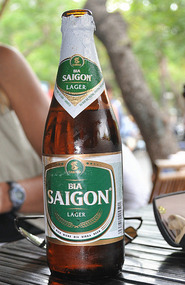
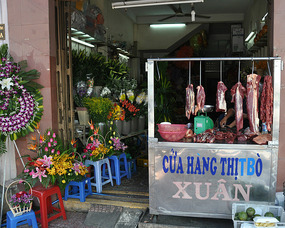










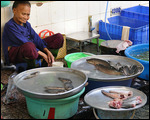
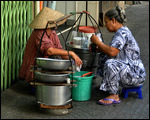


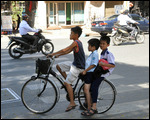

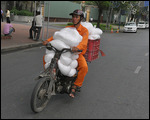
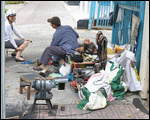
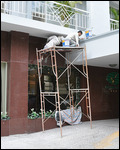











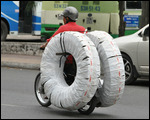



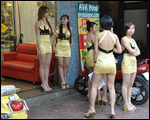

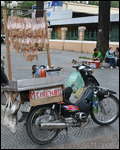
2025-05-23